Many of golf’s greatest courses are named to reflect where they reside. Think St. Andrews, Royal Melbourne, and Augusta National. Others evoke nature’s splendor—Pebble Beach, Sand Hills, and Pacific Dunes, to name a few. A smaller group of acclaimed layouts have a decidedly more personal identification. These courses were named for an influential person, past or present.
In contemplating what are the best of this breed, the qualifier mandated that the entire facility had to be named after the individual, not just the golf course. We omitted Trail names, college courses named for benefactors, and courses that had been renamed for someone, changing the original course name. Amid those parameters, here are the top 10 U.S. courses named for people.
10. Wynn Golf Club—Las Vegas, Nev.
Constructed on the old Desert Inn plot on the Las Vegas Strip in 2005, Wynn Golf Club signified the golf return of hotelier Steve Wynn, who had been divested of his original Las Vegas golf project, Shadow Creek, in 2000. Teaming once again with Tom Fazio, Wynn achieved an oasis-in-the-desert ambiance via 15,000 pines, planted atop slopes that cocooned virtually every hole and by the handsome water features that graced 11 holes. It closed—apparently for good—in 2017 to accommodate a hotel addition and water-oriented amusement park, but those plans fell through, and Fazio was summoned again. In late 2019, Wynn reopened, shortened by 300 yards with eight new holes. Fazio reworked the other 10 holes, injected ripples into the flattish terrain, expanded putting surfaces, and softened green surrounds. The showstopping waterfall at the long par-four 18th remains, but the hole is now a long par three.

9. Gamble Sands (Sands)—Brewster, Wash.
David McLay Kidd’s wild ride in central Washington turned 10 in 2024, with another championship sibling due to open in the fall. Kidd’s original spread features enormously wide, rumpled, firm fairways that twist through massive sand ridges and lead to equally firm, gigantic greens, with significant emphasis on ground game options. The rugged, high-desert scenery includes Columbia River views and vistas of the snow-capped northern Cascades. Built for the Gebbers family, one of the nation’s largest producers of apples and cherries, the course was named to honor Dan Gamble, the original ranch owner who settled this tranquil place in the 1880s, and/or his daughter, Martha Gamble, who married into the Gebbers family and who led them all through the Depression years of the 1930s. The “Gamble” script on the club logo was Martha Gamble’s original signature that she used when signing bank checks.
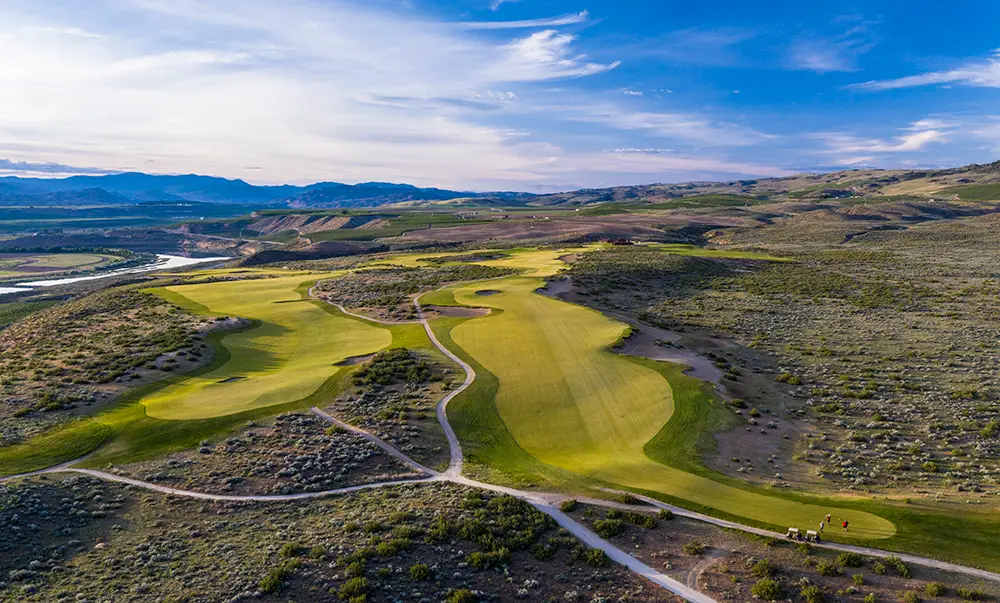
8. Rich Harvest Farms—Sugar Grove, Ill.
Located 50 miles west of Chicago, Rich Harvest Farms began life as the personal playground of billionaire Jerry Rich, who made his fortune in computer software programs that revolved around the stock exchanges. His understanding of numbers came in handy as his one-hole backyard novelty in 1989 became a six-hole layout, then nine holes and ultimately in 1999 an 18-hole championship spread. Partly open and partly wooded, this rugged test of golf is slashed with creeks, ponds, and semi-blind shots. Invariably in superb condition, it was home to the 2009 Solheim Cup and the 2017 NCAA Championships, where Scottie Scheffler took a one-shot lead into the final round of the individual portion but shot 78 to finish T3.

7. Reynolds Lake Oconee (Great Waters)—Greensboro, Ga.
Most of the Reynolds courses are draped atop property that had been a family hunting and fishing retreat since the 1920s—called “Linger Longer.” Patriarch Mercer Reynolds Sr.—the inventor of solidified cottonseed oil—and later his cousin, James Madison Reynolds, amassed more parcels into the 1930s. After Georgia Power dammed the Oconee River in 1979, massive Lake Oconee was formed, with all its attendant recreational options. Soon thereafter, Mercer Reynolds III founded the Reynolds Plantation resort and community—which morphed into Reynolds Lake Oconee in 2016. Of the Reynolds courses, Great Waters reigns supreme. This 1992 Jack Nicklaus creation hugs the shoreline of Lake Oconee for nearly the entire back nine with tall pines framing most of the holes. Following a successful refurbishment in 2019 by Nicklaus and his design associate Chad Goetz, Great Waters is greater than ever.
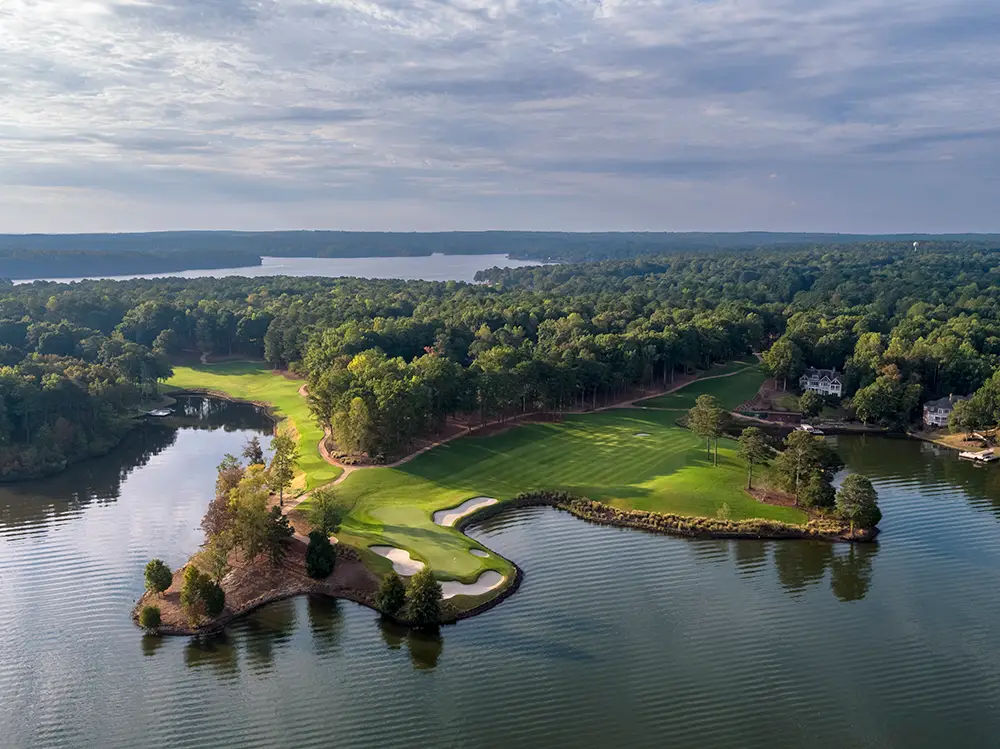
6. Trump National Golf Club Bedminster (Old)—Bedminster, N.J.
Venue for the 2017 U.S. Women’s Open, this 2004 Tom Fazio creation unfolds over rolling horse country terrain in rural New Jersey. Its massive scale provides for a 7,721-yard layout, with huge bunkers, extra-large greens, and plenty of risk/reward options. Although technically owned by the Trump Organization, Trump Bedminster owes its identity to its most famous frequent golfer, businessman and 45th U.S. President Donald J. Trump. The New Course at Bedminster, a 2008 Tom Fazio II design, played host to the 2009 U.S. Junior Amateur, won by Jordan Spieth.

5. Robert Trent Jones Golf Club—Gainesville, Va.
Named for the dean of U.S. golf course architects, this four-time Presidents Cup host is chock-full of water hazards and puzzle-piece bunkers, both which encourage and at times require risk/reward decision-making on tee shots and approaches. Located 30 miles from Washington, D.C., and opened in 1991, the best holes at RTJGC edge and even jut out into 850-acre Lake Manassas—though the 65,000-square-foot Georgian clubhouse is so full of creature comforts, it’s equal in grandeur to the golf course. Look for renewed spotlight on Robert Trent Jones Golf Club in mid-September, when it hosts the 2024 Solheim Cup.

4. Pete Dye Golf Club—Bridgeport, W.Va.
Two hours south of Pittsburgh in the heart of coal country is this one-of-a-kind creation that began life in the 1970s yet didn’t open its 18 holes until 1995. Deep pit lakes and mine remnants—even a cart ride through an old mine shaft—make for authentic reminders of what the property had been. Yet, the results are pure Dye, with deep, strategically placed bunkers, effective use of a river and lakes as hazards, bluff-top tees and greens, and a superb, rugged closer. Named for the most influential architect of the second half of the 20th century, Pete Dye Golf Club served as a distinctive Nationwide Tour event host from 2004–09, when winners included Jimmy Walker and Jason Gore.

3. Butler National Golf Club—Oak Brook, Ill.
“Brutal, but fair” was the description attached to this men-only club in suburban Chicago by PGA Tour pros who contested the Western Open here from 1974–90. George Fazio and his nephew Tom carved Butler from rolling farmland and injected it with rigor in the form of angled greens that are frequently guarded by creeks and lakes, notably at the long par-three 5th, the par-five 8th, and the par-four 18th. The club was named for its founder, Paul Butler, who by 1970, had turned his aviation business into the nation’s largest seller of airplane fuel.

2. Baltusrol Golf Club (Lower)—Springfield, N.J.
Amid the vast array of major championships that have graced this property, the club’s beginnings were much humbler. The land upon which the golf resides was once the farm of a man named Baltus Roll—who was murdered on the grounds in 1831, apparently by two ne’er-do-wells who suspected that Roll had buried a treasure in his farmhouse. Louis Keller bought the acreage in the 1890s and established the club known as Baltusrol. Its original course hosted two U.S. Opens, in 1903 and 1915, but that course was abandoned when A.W. Tillinghast built two new layouts, the Lower and the Upper, which opened simultaneously in 1922. The Lower has held four U.S. Opens and two PGA Championships. Its muscular par fours, back-to-back par fives at 17 and 18, and a par-three 4th hole that Sports Illustrated once called the finest 4th hole in America made it the preferred tournament track, especially after renovations by Robert Trent Jones Sr. and later his son Rees. In 2021, Gil Hanse completed a well-received restoration of the Lower—and he’s well underway doing the same to the Upper, where Tony Manero won the 1936 U.S. Open.

1. Wade Hampton Golf Club—Cashiers, N.C.
Named for Confederate General Wade Hampton III, who also served as the Governor of South Carolina (1876–79) and later U.S. Senator, Wade Hampton sits just 1.3 miles southeast of High Hampton, a venerable North Carolina resort which in an earlier time was the summer retreat of the Hampton family. Tom Fazio’s gorgeous mountain masterpiece dates to 1987 and it may well be his finest design. Winding streams, graceful elevation changes, Chimney Top Mountain backdrops, and a stellar collection of par fours are among the attractions. The downhill par-three 17th to a green tucked in pines and hardwoods and the option-laden par-five 18th with a creek that twists up the left side are standouts.
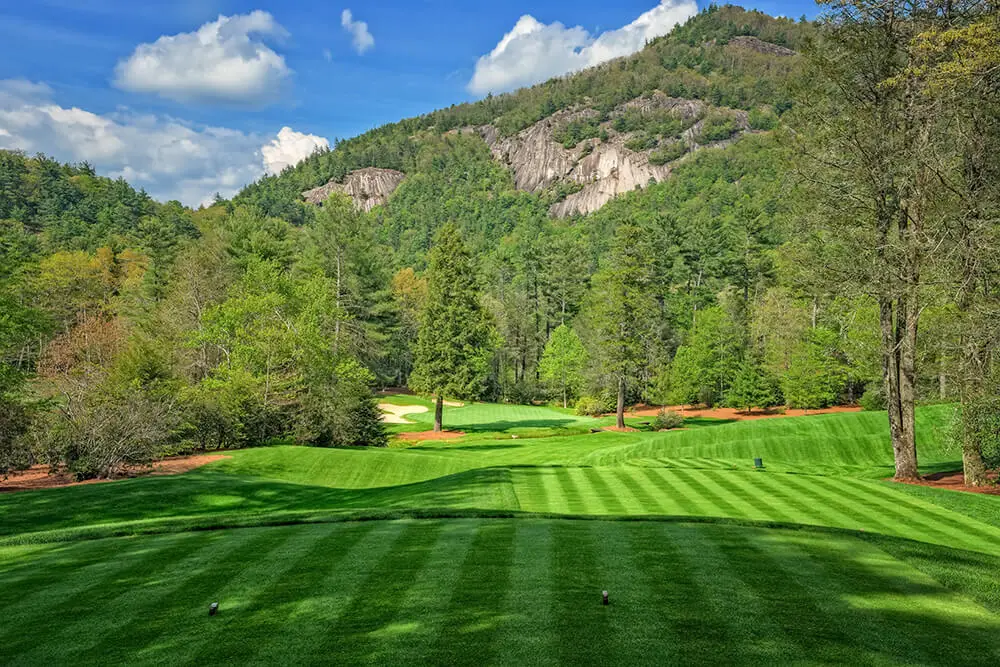



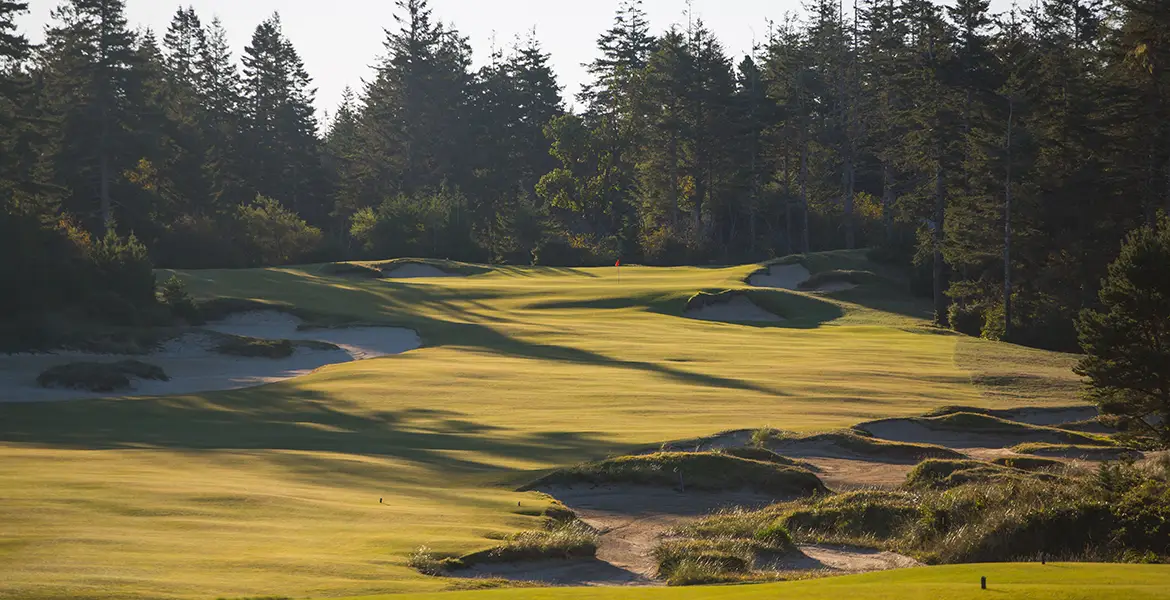

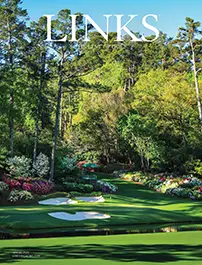
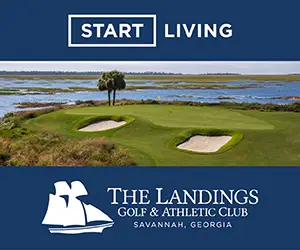
Is it just me, or does this website use the absolute worst font possible? It is so incredibly straining to read these articles. please use a different font.
Cobb Course at Glade Springs, WV. Named for course architect, George W Cobb.
Hard to believe that you would pick any course above RTJ that has not hosted AT LEAST one international championship OR a PGA event, but that is what I come to expect with this fishwrap lol
What about the courses named after Bobby Jones. One in Atlanta and one in Sarasota Florida
How could you miss those